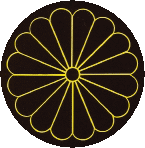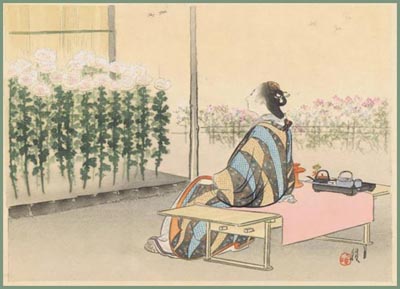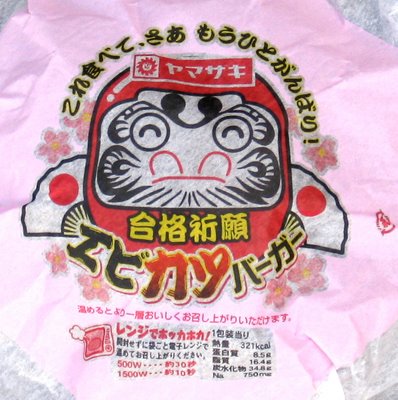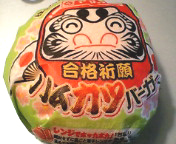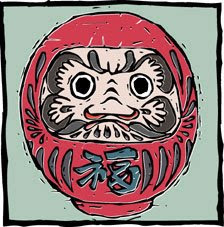Temple Jobo-Ji
..............................................................................................................................................
Jooboji nuri 浄法寺塗 Joboji nuri laquer ware
Iwate

- quote -
Joboji Nuri takes its name from the Joboji family which ruled the northern part of Iwate Prefecture during the middle ages, and it is also the name of the area.
According to local legend, monks were dispatched there from the head temple, when a famous high priest called Gyoki built Tendaiji temple in the area during the Nara period (710-794). Lacquer ware techniques were apparently introduced at the time, so that the monks would be able to make their own tableware.
A product important to the ruling Nambu clan during the Edo period (1600-1868), the making of Joboji-Nuri spread from around Tendaiji temple to the adjoining area now known as 安代町 Ajiro-cho and became known as 御山御器(おやまごき Oyama-goki ware. This larger area became the foundation of the present production.
Items of lacquer ware
which have been used since ancient times such as soup bowls, rice bowls and lipped bowls are still being made. Some of the traditional bowls are patterned but most of them are finished in plain vermilion, black or a clear lacquer to show off the wood and have a sophisticated mat finish. But perhaps the biggest feature of Joboji ware is its everlasting sense of quality stemming from a use of quality materials. Bowls for soup or rice, trays, flower vases are the main products today.
- reference source : Iwate Laquer Ware cooperative association -
- quote -
Joboji Museum of History and Folklore

Joboji Museum of History and Folklore at the entrance of Tendaiji Temple.
Many cultural property specified documentation by the country and city are on display, such as: articles about Tendaiji, stoneware and earthenware and other tools from the district. In addition it is possible to learn about the traditional job of lacquer scraper and how Japanese lacquer is integrated in to the everyday life of the people here at Joboji Temple, which has the largest production of lacquer in the country. There are also tools such as planes used by craftsmen, and many articles and documents on lacquer. Learn why the lacquerware made by the monks of Tendaiji are referred to as "Oyama-goki", and how it is rooted in the lives of ordinary people.
Many lacquerwares that are said to be the roots of "Joboji Coating" speak volume about the history of this place and its lacquerwares. Visit the museum before Joboji to better understand the history and the relation of Joboji Coating and Tendaiji Temple.
- - 35 Oyamakubo Joboji-machi Ninohe
- reference source : ninohe-kanko.com/english...-
- further reference Joboji -
..............................................................................................................................................
..............................................................................................................................................
Jooboji nuri 浄法寺塗 Joboji nuri laquer ware
Iwate

- quote -
Joboji Nuri takes its name from the Joboji family which ruled the northern part of Iwate Prefecture during the middle ages, and it is also the name of the area.
According to local legend, monks were dispatched there from the head temple, when a famous high priest called Gyoki built Tendaiji temple in the area during the Nara period (710-794). Lacquer ware techniques were apparently introduced at the time, so that the monks would be able to make their own tableware.
A product important to the ruling Nambu clan during the Edo period (1600-1868), the making of Joboji-Nuri spread from around Tendaiji temple to the adjoining area now known as 安代町 Ajiro-cho and became known as 御山御器(おやまごき Oyama-goki ware. This larger area became the foundation of the present production.
Items of lacquer ware
which have been used since ancient times such as soup bowls, rice bowls and lipped bowls are still being made. Some of the traditional bowls are patterned but most of them are finished in plain vermilion, black or a clear lacquer to show off the wood and have a sophisticated mat finish. But perhaps the biggest feature of Joboji ware is its everlasting sense of quality stemming from a use of quality materials. Bowls for soup or rice, trays, flower vases are the main products today.
- reference source : Iwate Laquer Ware cooperative association -
- quote -
Joboji Museum of History and Folklore

Joboji Museum of History and Folklore at the entrance of Tendaiji Temple.
Many cultural property specified documentation by the country and city are on display, such as: articles about Tendaiji, stoneware and earthenware and other tools from the district. In addition it is possible to learn about the traditional job of lacquer scraper and how Japanese lacquer is integrated in to the everyday life of the people here at Joboji Temple, which has the largest production of lacquer in the country. There are also tools such as planes used by craftsmen, and many articles and documents on lacquer. Learn why the lacquerware made by the monks of Tendaiji are referred to as "Oyama-goki", and how it is rooted in the lives of ordinary people.
Many lacquerwares that are said to be the roots of "Joboji Coating" speak volume about the history of this place and its lacquerwares. Visit the museum before Joboji to better understand the history and the relation of Joboji Coating and Tendaiji Temple.
- - 35 Oyamakubo Joboji-machi Ninohe
- reference source : ninohe-kanko.com/english...-
- further reference Joboji -
..............................................................................................................................................
